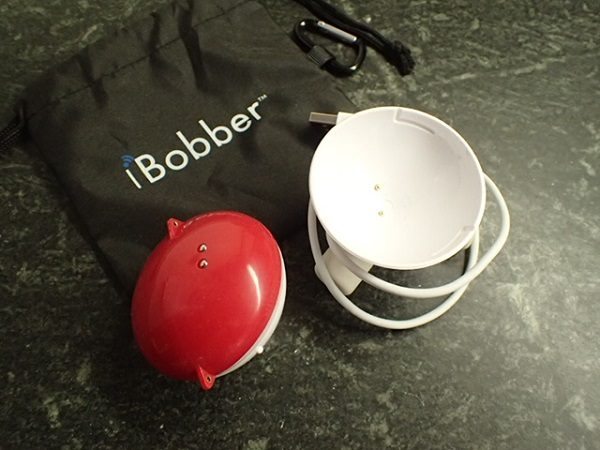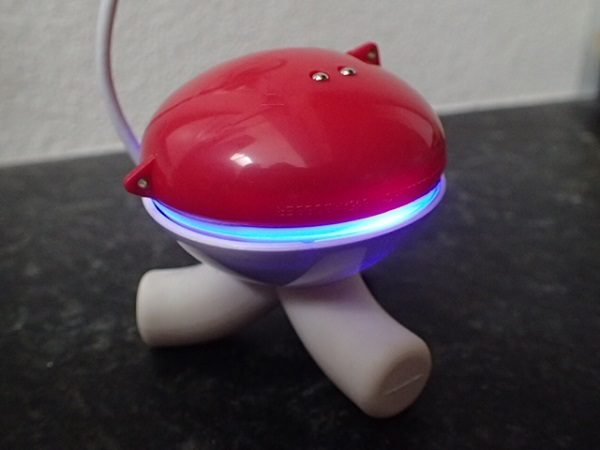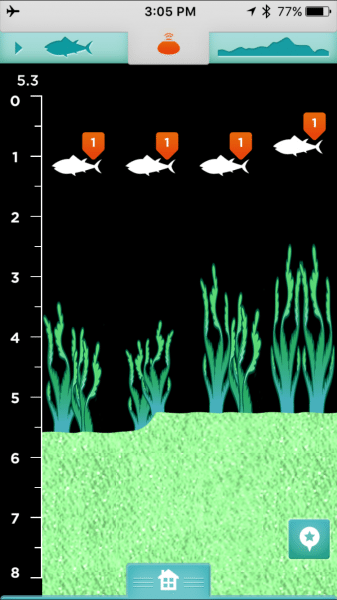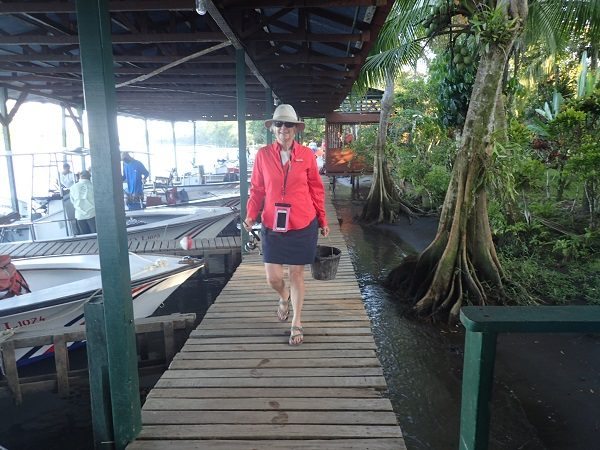
When the opportunity to review the iBobber from ReelSonar was presented, I took the bait. I was excited to try a fishing bobber made for the 21st century that was also a fish finder, a waterbed mapper, GPS tagger & trip logger, and weather station. We already had a fishing trip planned so it was the perfect opportunity to try it out in several environments.
Fishing bobbers can usually be found on quiet lakes or lazy rivers for laid back fishing. The bobber is connected to the line and the bait to the bobber tail, it’s cast out to the water and the fisherman waits for the tell-tale nibble bob.
The iBobber from ReelSonar is not like that. Though it looks pretty much like a regular fishing bobber, a round white and red ball with two eyes for line connections, instead of being an empty airhead it’s got some smarts packed inside the plastic dome.
Through its smart phone app, the iBobber has a lot of tricks. Besides the fish finder and waterbed mapper, it also has a fish strike alarm and an LED beacon for night fishing. It can tell you the water temperature, moon phase/rise/set, and your GPS location. It’s even got a weather report, with current, high and low temperatures, humidity, a barometer and wind speed and direction.
The iBobber comes with a light weight carrying pouch and a USB charging stand. While charging, the iBobber nestles in the charging stand and the LED ring between the red and the white hemispheres glows blue.

When taking it off the charging stand the LED ring flashes green to indicate that it is active and ready to link to the iBobber smart phone app. Because the iBobber uses “Bluetooth Smart”, it is paired from the iBobber app, not the Bluetooth discovery screen.
Since we were going to a remote location on the east coast of Costa Rica I wanted to be sure the iBobber was in working order before I left, so I tried it out in my backyard pond. After installing the iBobber app on my iPhone, it was ready to connect. This was a little tricky for me. I’ve got quite a few devices that connect via Bluetooth and apparently things get a little congested. At first the app couldn’t find the iBobber. Powering the iPhone down and up a few times seemed to clear the congestion and allow the iBobber to connect. Once connected, I could map the floor of my pond and even see some of the goldfish with the fish finder (I think. They are on the small side).
Having downloaded the iBobber documentation to my phone as well, I was ready to go on our fishing trip. I planned to try out the iBobber in several situations; on the ocean, on a slow river and on a fast river.
The Ocean test
The first day fishing on the Caribbean, the sea was choppy and we didn’t have our sea-legs yet. Once we got to our fishing location, about a mile off shore, we threw out some lines for tarpon. While waiting for a tarpon or two to meander by for a snack, I tossed out my iBobber (without a hook or bait) to use the sonar to map the sea floor and see if it could find some fish. Our boat was equipped with a Garmin sonar fish finder and I was happy to see that the iBobber sea floor mapping and depth corresponded to the Garmin. The iBobber showed some fish that were not visible on the Garmin but since none went after our bait I could not validate the iBobber’s fish findings. Tarpon are large and strong fish, and they took their time finding the snacks we set out to tempt them, so I had plenty of time to test out the iBobber on the ocean. Between the choppiness of the water, the size of the ocean fish we were after, and the fact that our boat was already fitted with a sonar fish finder, as are most of the ocean going fishing boats I’ve been in, I concluded that ocean fishing may not be the iBobber strongest suit. I was also concerned that a forty to one hundred pound tarpon might mistake the iBobber for food and destroy it.
Slow River test
A few days later we decided to fish on a slow area of the Rio Jaloba for mojarra. The river was slow and only about 3 feet deep where the mojarra lurked. While the iBobber was much better suited to this environment, it hardly showed off the iBobber’s strengths since we could see the fish through the clear water.
Fast River test
On another afternoon we went up the Rio Pacuara for machaca. The iBobber in the faster river environment showed the waterbed fine but seemed to have a lot of false positives on the fish finder. We didn’t encounter any machaca that day and I was left to surmise the iBobber fish finder may have been fooled by floating debris.

Lake and Ice fishing
I have not yet had a chance to try the iBobber in a lake from a boat or shore, or while ice fishing. I think those environments would be much better suited for the iBobber.
Conclusions
Like any other tool, the iBobber must be matched to the appropriate job to be really useful. More traditional bobber environments, like lakes or a slow river, will be more successful.
Also, I expect it will excel when used for ice fishing, so now I’ve got to arrange another winter Montana trip. Purely for research. Honest.
I would not recommend the iBobber for ocean fishing. I found there was just too much going on with the wave action. Plus most ocean boats have sonar installed. Fast river fishing, boat or shore, was inconclusive, since we didn’t encounter any fish.

One big concern I had while fishing with the iBobber was dropping my iPhone in the water. Since the iBobber is only useful through the smart phone app, the smart Phone must be with you. There are lots of waterproof iPhone cases available, I bought one with a leash for security.
Source: The sample for this review was provided by Reelsonar.com. Please visit their site for more info and Amazon to price check / order.
Gerber Gear 22-47162N Fast Draw Folding Assisted Opening Pocket Knife, Fine Edge, Black
$42.73 (as of December 16, 2025 18:14 GMT -05:00 - More infoProduct prices and availability are accurate as of the date/time indicated and are subject to change. Any price and availability information displayed on [relevant Amazon Site(s), as applicable] at the time of purchase will apply to the purchase of this product.)Gerber Gear EVO Jr. Folding Knife - Serrated Edge [22-41493]
$28.99 (as of December 16, 2025 18:07 GMT -05:00 - More infoProduct prices and availability are accurate as of the date/time indicated and are subject to change. Any price and availability information displayed on [relevant Amazon Site(s), as applicable] at the time of purchase will apply to the purchase of this product.)Product Information
| Price: | $99.99 |
| Manufacturer: | ReelSonar |
| Retailer: | Amazon |
| Requirements: |
|
| Pros: |
|
| Cons: |
|


